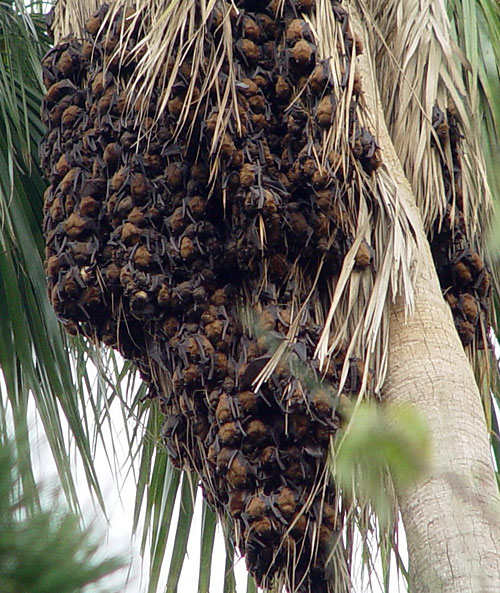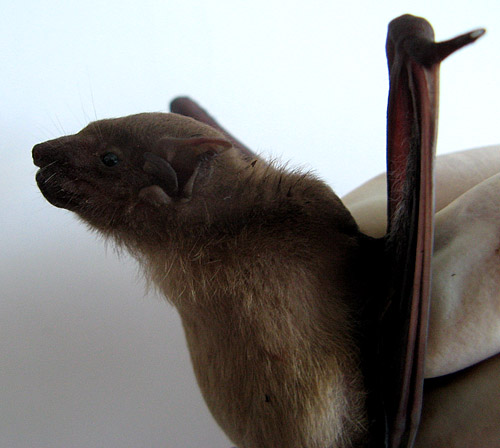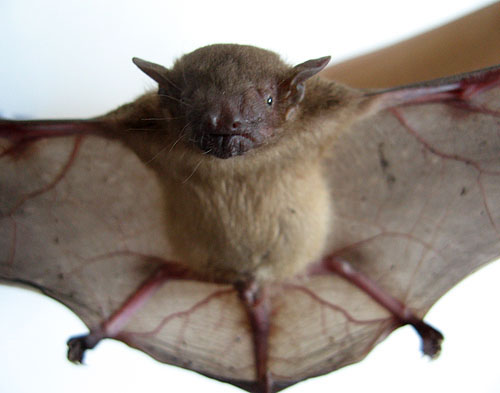Scotophilus kuhlii
Lesser Asiatic Yellow House Bat
Xiao Huangfu
Morphological description Life history Distribution Habitat Roost sites and roosting patterns Emergence and flight pattern Foraging behaviour Echolocation calls Status and protection

Morphological Description
· Dorsal fur is brown without yellow colour of S. heathii. Ventral fur is lighter than dorsal fur.
· Forearm length is 44-55 mm, so it can be distinguished from S. heathii on size (the latter is 55-66 mm). Both species have a crescent-shaped tragus.
Life history
· Little known.
Distribution
The distribution is very similar to that of S. heathii in China. Outside of China the species extends from pakistant to west malaysia and the Philippines (Smith & Xie 2008).
Habitat
· Can be found in towns and villages. Flies in towns and villages and over water (Shek 2006; Smith & Xie 2008).
Roost sites and roosting behaviour
· Roosts in buildings and trees. Colonies can contain several hundred individuals (Shek 2006; Smith & Xie 2008).
Emergence and flight pattern
· . Forages early in the evening and can fly low to ground (Smith & Xie 2008).
Foraging behaviour
· Presumably an aerial insectivore. eats beetles, termites, moths and other flying insects (Shek 2006).
Echolocation calls
· Not known.
Status and protection
· There is no estimation of population size in China for this species.
· Greater Asiatic yellow house bats are at LR/lc, assessed by the Red List of Threatened Species (IUCN, 2007) and are not listed in the Law of the People's Republic of China on the Protection of Wildlife in 1989. Conservation status in China is RL-LC (Smith & Xie 2008)
· Buildings and trees should be protected as their habitats.

